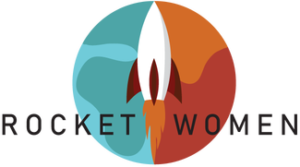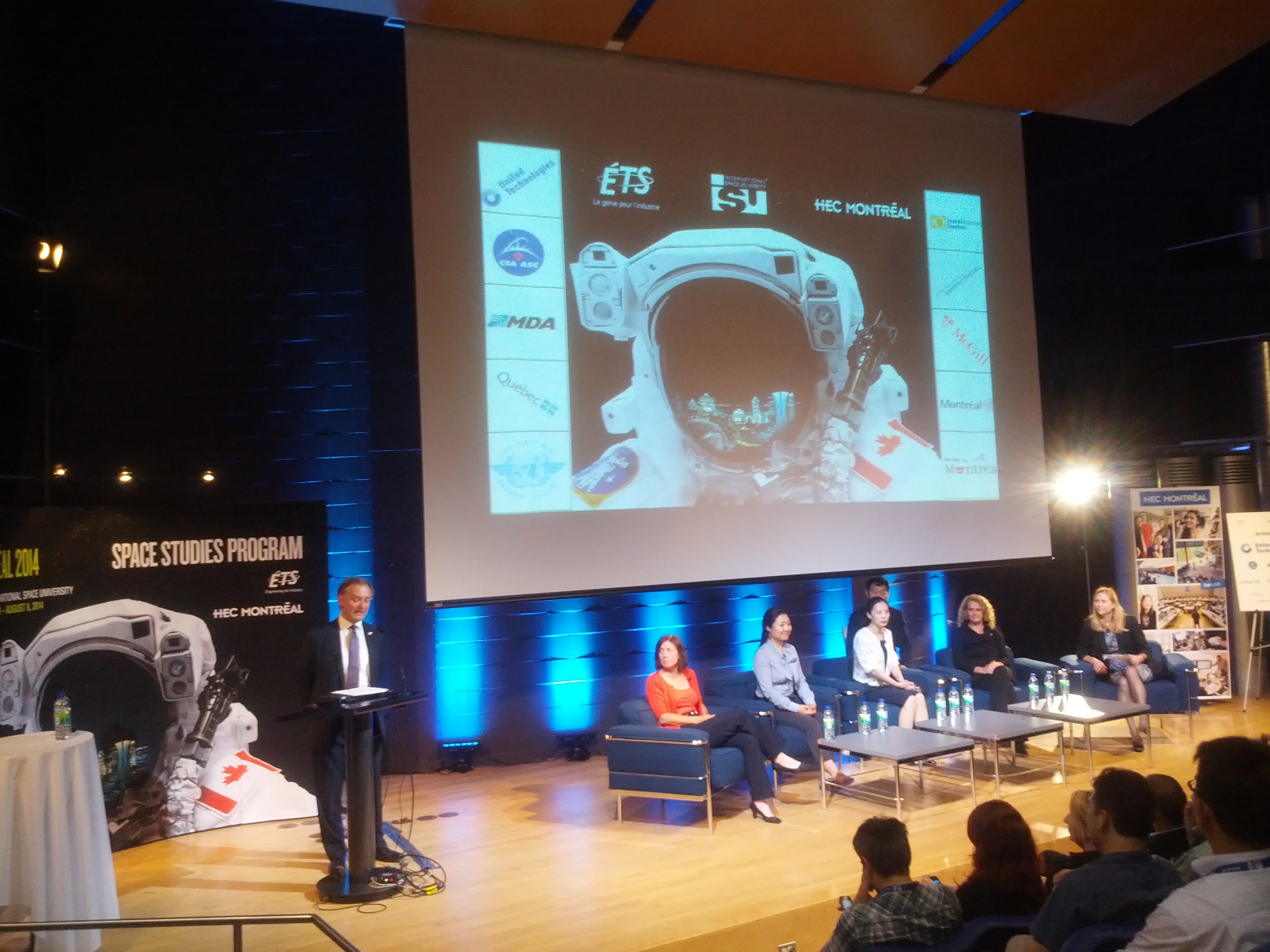
“I bet the first thing you noticed about this panel was that they were all astronauts..and that they’re all women” – Janet Petro, Deputy Director, NASA Kennedy Space Center
Janet Petro, Deputy Director of NASA’s Kennedy Space Center, opened the panel as moderator. She is an esteemed individual of her own with a career in the United States Army flying helicopters, moving onto the commercial aerospace industry before joining NASA and being chosen as Deputy Director of one of the most prominent NASA centers. Her current role involves “managing the Kennedy team to developing center policy to being involved in executing missions that transform the world“. Janet was joined by four panelists that for the first time in the history of the International Space University (ISU)-organised annual Astronaut Panel, compromised of all-female astronauts. Having been an alumna of ISU since 2008, I was proud that the institution had the foresight to organise such an event, really bringing female role models into the public eye. At the start of the event the theatre had standing room only, with the event open to the public and containing both students and children as young as three, a fantastic introduction into the space industry and allowing younger generations to visualise their potential future.
“Having been an alumna of ISU since 2008, I was proud that the institution had the foresight to organise such an event, really bringing female role models into the public eye.”
Janet mentioned that 2013 was the first time in history that NASA had chosen a new astronaut class with a half male-female ratio. Fifty-one years after Valentina Tereshkova flew as the first woman in space and “orbited over the sex barrier”. In the US, 13 female airforce pilots were selected as astronauts with 7 making the final cut. Days before final testing began that opportunity was withdrawn. It took 20 further years until Sally Ride was selected as a NASA astronaut and flew into space. Progressively, the UK, Japan and South Korea have chosen women to represent their county as the first national astronaut.
“I was a girl, they were men. I was Canadian, they were American men. They were test pilots, nobody in my family had ever been on a plane. I didn’t speak English (her native language being French).” – Dr.Julie Payette, Astronaut, Canadian Space Agency
Janet was joined by Astronaut Dr.Julie Payette from the Canadian Space Agency (formerly). Julie spoke about how she was inspired to become astronaut, “When you have a dream, people may encourage or discourage you to have that dream, but keep that dream in your heart”. She added that during the 1960s, whilst watching the Moon landings, little girls were inspired to do that. She realised then that she wanted to walk on the Moon and drive the lunar rover. “I was a girl, they were men. I was Canadian, they were American men. They were test pilots, nobody in my family had ever been on a plane. I didn’t speak English (her native language being French).” Even with this multitude of obstacles against her, Julie said she was lucky that her family didn’t discourage her. She encouraged the audience through, “You never know when an opportunity is going to come your way”. “You can control your education..be a citizen in society, but if you don’t apply or put your name down for something you believe in, you have a 100% chance of not getting it and reaching your goal.”
“You can control your education..be a citizen in society, but if you don’t apply or put your name down for something you believe in, you have a 100% chance of not getting it and reaching your goal.” – Dr.Julie Payette, Astronaut, Canadian Space Agency
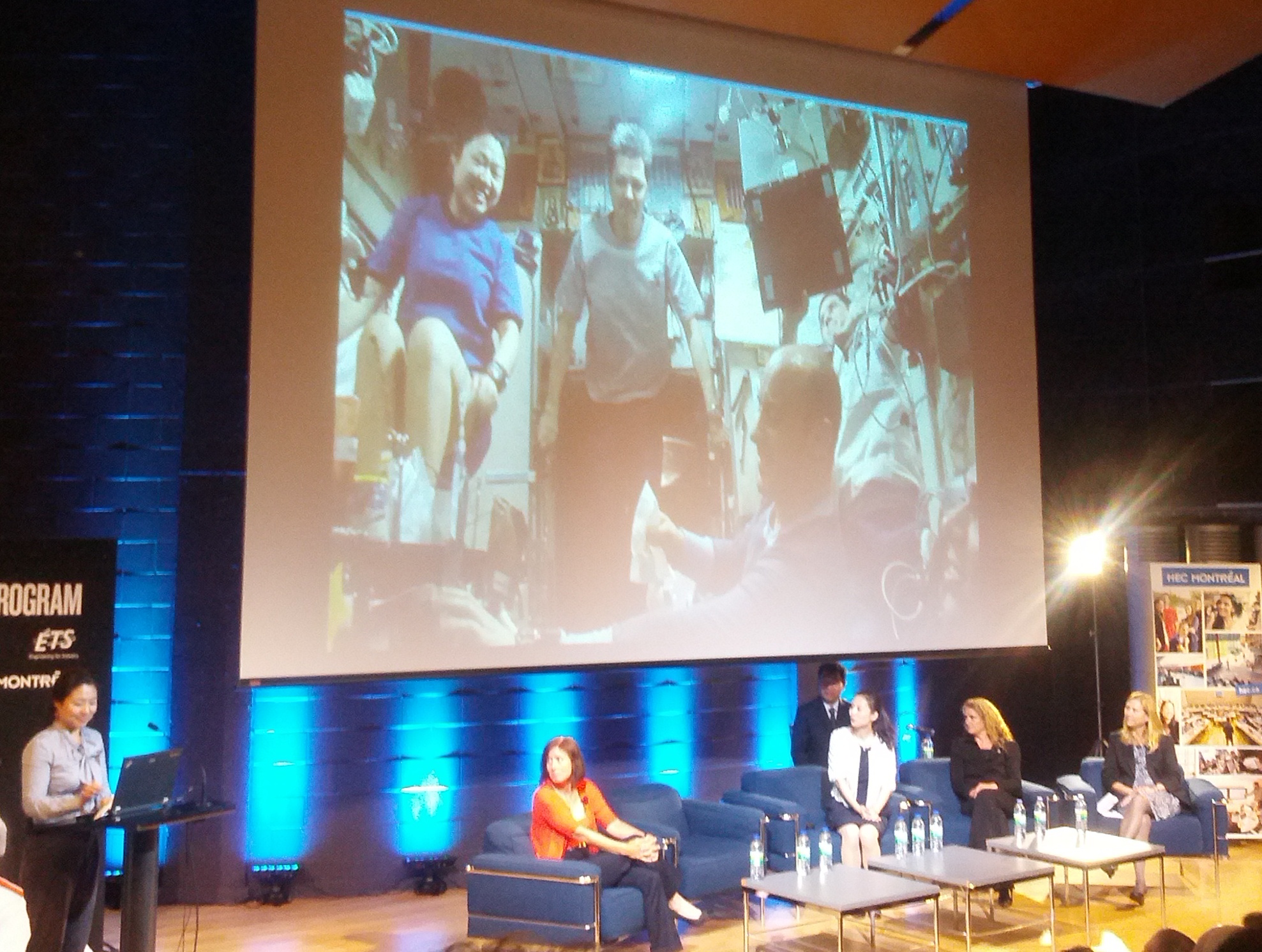
Soyeon Yi was only 29 years old when she flew to the International Space Station (ISS) and experienced an off-nominal ballistic re-entry of her Soyuz capsule on landing. She endured up to 8Gs, 8 times her body weight being pushed upon her with the normal Soyuz re-entry force not exceeding 4.5Gs. Peggy Whitson, Soyeon’s fellow crewmate and the first female commander of the ISS, described the 60 second g-force as being in a “rolling car crash“. Talking about the ballistic re-entry, Soyeon joked that “as a grown up I should pretend to be ok.”
Soyeon joked that it was a privilege to be a female astronaut, because everyone knew you because of your ponytail in microgravity. She said that she had considered to cut her hair prior to her flight as it became caught numerous times in helmets and affected pressure seals, however a NASA astronaut said that she shouldn’t as it was a privilege to be a woman. Soyeon recounted that in South Korea her father had to encounter public and social opinion that female astronaut candidates shouldn’t go into space and instead go home and cook for their family. Societal expectations influence public opinion and was something that she had to fight to change. Others in South Korea said that the selection of an astronaut and flight was a waste of taxpayers funds. A viewpoint that Soyeon has shown to negate, by being an ambassador of her country and encouraging the next generation to study STEM.
The first South Korean in space discussed one of her proudest moments when she met Hillary Clinton whilst representing her country. “Hillary Clinton wanted to be an astronaut, but there were no female astronauts.” Ironically, it was only after meeting Mrs.Clinton that her father was able to proudly say that the first South Korean astronaut was his daughter, overcoming societal pressures and opinion. Soyeon discussed the cultural implications of her role, with many conservative families in South Korea not educating women to the degree men are allowed to and women expected to listen to their husbands. Whilst in space and looking back on the Earth her thoughts drifted as to why she was born in South Korea and that exact time, why it wasn’t in 1915 for instance when she couldn’t have gone to middle school, or why she wasn’t born in countries such as Kenya or Haiti when she may have not received an education at all. Soyeon realised how blessed she was and decided to help others in need whenever she can to the best of her ability.
“Whilst in space and looking back on the Earth her thoughts drifted as to why she was born in South Korea and that exact time, why it wasn’t in 1915 for instance when she couldn’t have gone to middle school, or why she wasn’t born in countries such as Kenya or Haiti when she may have not received an education at all.” – Soyeon Yi, First South Korean In Space
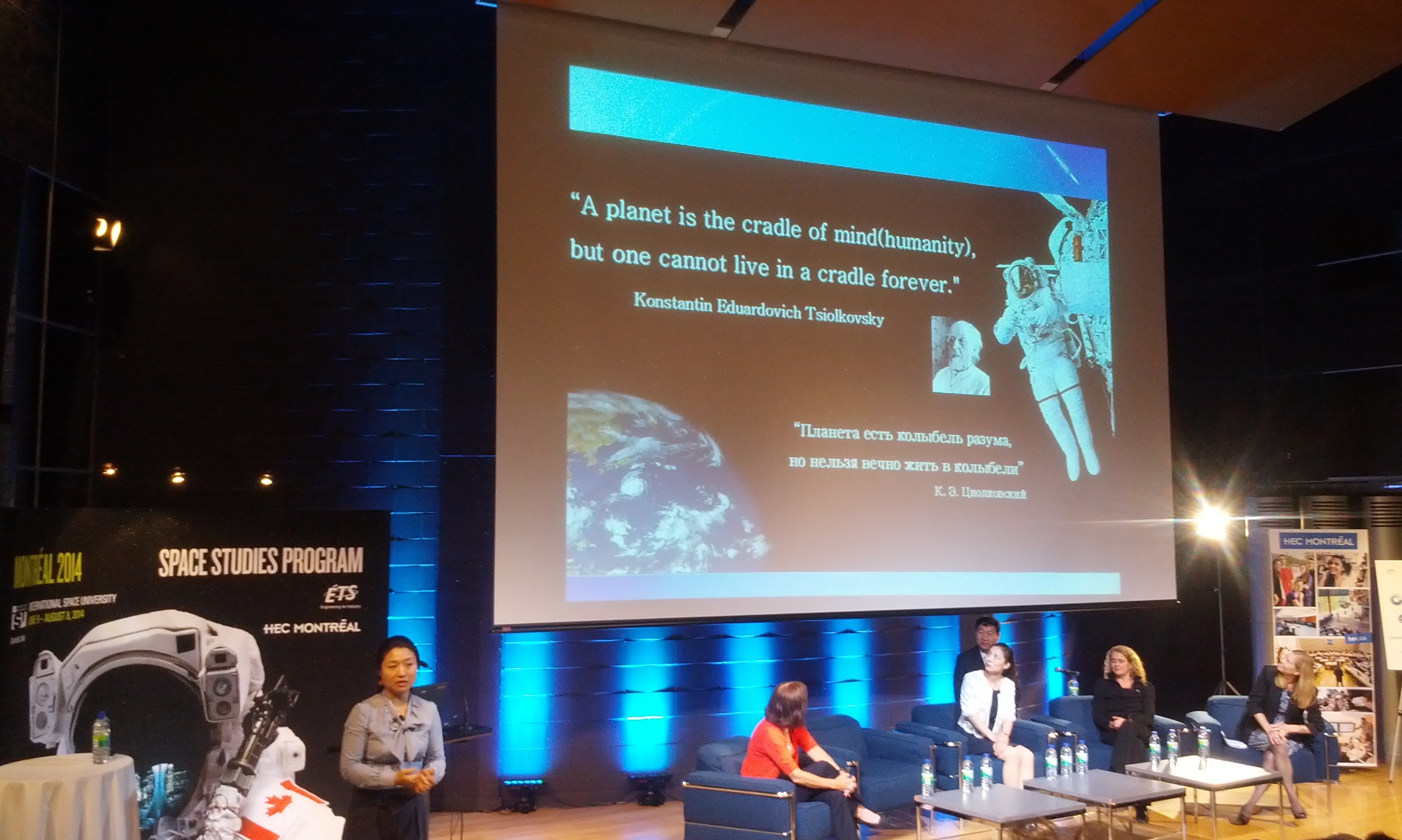
Soyeon quoted the visionary and one of the Fathers of Rocketry, Konstantin Tsiolkovsky, “Earth is the cradle of humanity but one cannot remain in the cradle forever”. Explaining that the cradle is the most comfortable place, where you are always fed and cared for, however eventually you want to be independent and learn to walk yourself and feed yourself to go to where you want to be. She stated that humanity needs to leave our cradle and explore. Soyeon also described the sense of awe when looking out of the window, humorously comparing the view of the planet to meeting George Clooney. “Earth is alive like George Clooney, your brain is gone when you meet him – and when you look out of the window.”
Shannon Walker, NASA astronaut, has been in the space industry since the beginning of her career, working for Rockwell Space Operations Company as a robotics flight controller for the Space Shuttle Program at the Johnson Space Center in 1987. She was fortunate to be chosen to fly the Soyuz with the Russians rather than NASA’s space shuttle, fortuitous training that helped her gain a flight opportunity once the space shuttle had been retired. She emphasised that spaceflight was such an international endeavour, stressing the importance of countries collaborating. Shannon’s career at NASA since being chosen as an Astronaut Candidate in 2004, has included being the lead CAPCOM (Spacecraft Communicator) for the STS-118 Shuttle mission, the primary communication link between the crew and the Mission Control Center, MCC-Houston and crew support astronaut for the ISS Expedition 14 crew. Shannon was assigned to Expedition 24/25 and spent 161 days onboard the ISS in 2010.
“You never know what life is going to present to you.” – Shannon Walker, NASA Astronaut
Soyeon also described how traumatised the movie Gravity made her feel. The movie starting Sandra Bullock and George Clooney tells the story of how an astronaut fought to survive after debris destroyed her crew’s space shuttle and the ISS. Soyeon was visibly trembling having watched the scene depicting the frozen astronaut in the cabin, exposed to space. “Gravity is not a movie or a drama but could happen in real life” she added. The movie also does a tremendous job of bringing space to the forefront of the public’s imagination and highlighting international cooperation in space portraying vehicles including the ISS, Russia’s Soyuz, NASA’s shuttle, China’s station (Tiangong-1) and China’s capsule (Shenzhou).
Soyeon also pointed out that young girls should be encouraged to follow their dream, “If they can hear from their heart that they want to be an engineer of an astronaut. [But] If they want to be an actress then they should, as they help to make us a happier society.” She also admitted that as there are no other senior astronauts in South Korea to advise her she sometimes feels lonely as the sole national astronaut, however she’s a part of organisations such as ISU and the Association of Space Explorers (ASE) that provide guidance and mentorship.
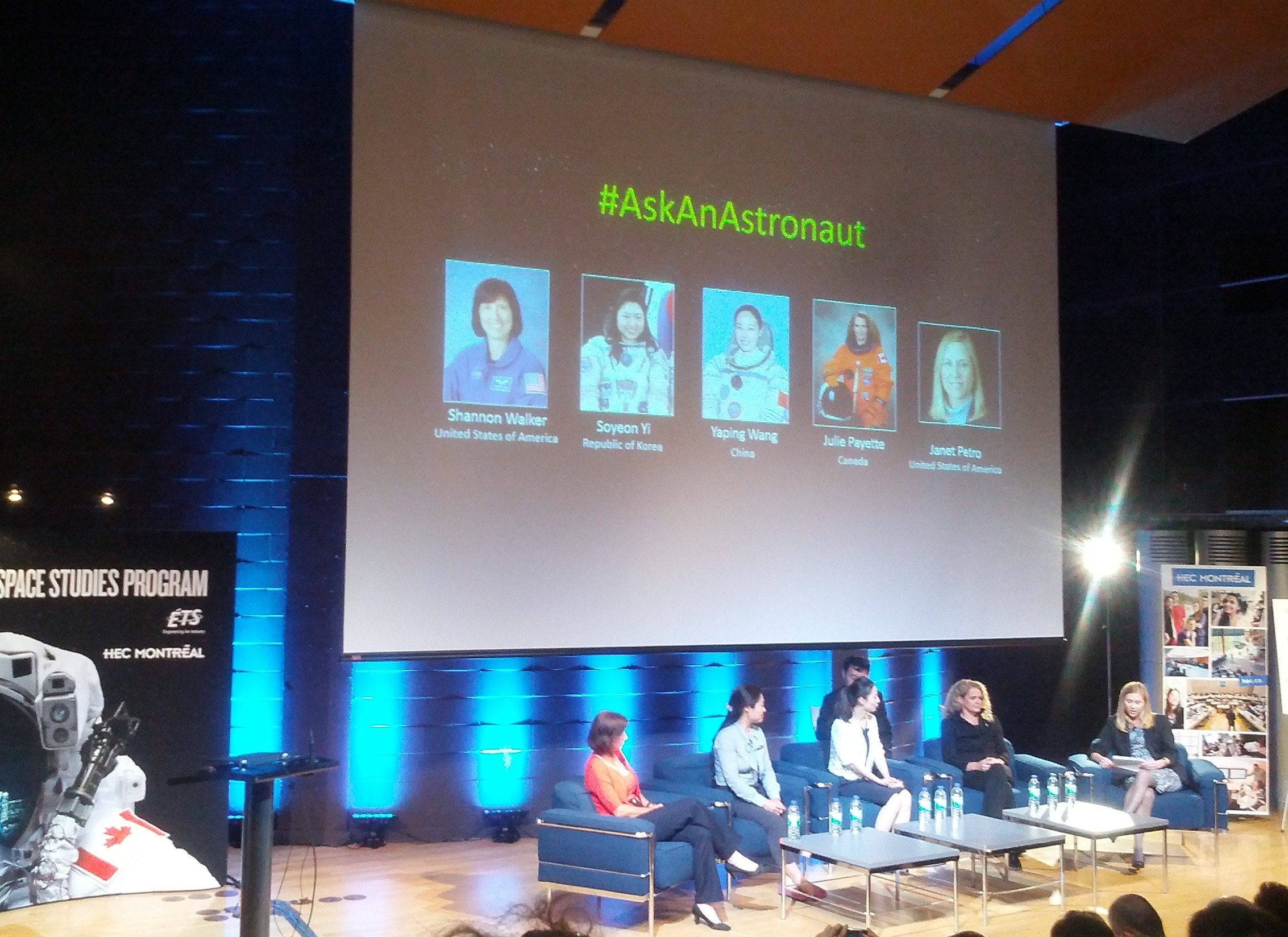
The panel also took questions from the audience and through social networks using the hashtag #AskAnAstronaut. When asked about the psychological differences between men and women, Wang Yaping, China’s second woman in space and Soyeon Yi clarified that” Women completely adapt to the space environment, just like men, physiologically. However women are considered to be more considerate and serious,” and joked that the advantages of being female were that they were lighter and more economical. Shannon Walker, NASA, added that astronauts sometimes feel like robots on the ISS as their tasks are repetitive, however both male and female adapt to the station and microgravity environment.
When discussing their biggest challenges in the pursuit of their goals, Julie Payette, CSA, admitted that it was “Fear and doubt I wouldn’t perform as needed.” A lack of self-confidence in one’s ability is an internal barrier that women battle around the world. Julie Payette said that it had been her biggest challenge and took a lengthy amount of time to convince herself that she was good for the job, even once she was selected and in training. “Astronauts are not rocket scientists, we don’t invent rockets.” Soyeon Yi added that 7-year-olds think astronauts know everything and ask her about detailed astronautics. She felt that she disappointed them as she couldn’t answer their questions and decided to gain a wider space knowledge base to be a good role model to younger generations. “The SSP [ISU Space Studies Program] is the perfect program to be a leader in the space field. Now I can collaborate with and have friends in over 30 countries from the course.” Shannon Walker’s biggest fear was speaking Russian in public in addition to the astronaut training programme being very physically challenging. “Like all fears, you need to do them a few times to overcome them.”
“[My biggest challenges were]..Fear and doubt I wouldn’t perform as needed.” – Julie Payette, Astronaut, Canadian Space Agency (CSA)
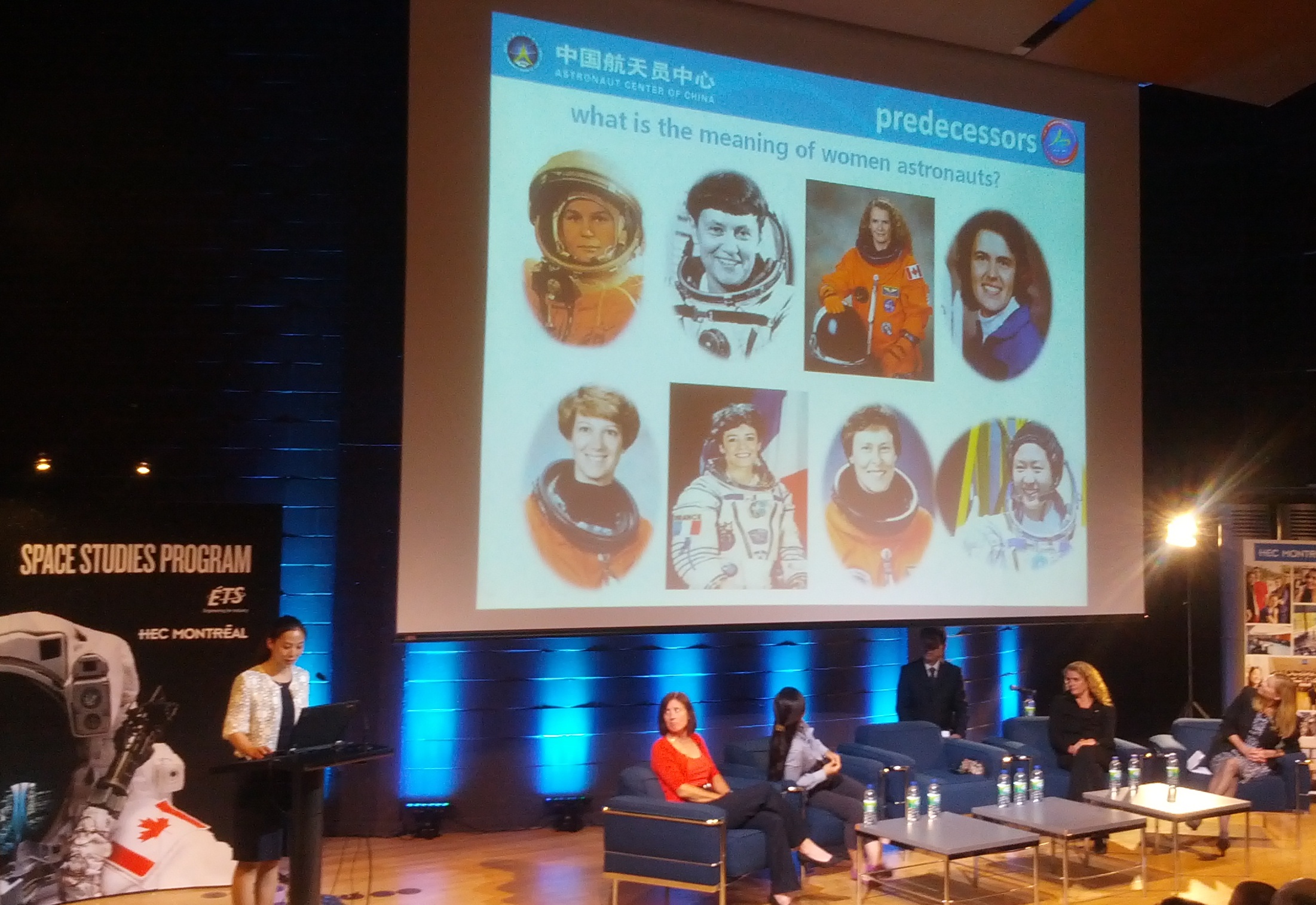
“All [the] Russian guys were worried about the small Asian woman.” – Soyeon Yi, First South Korean Astronaut
